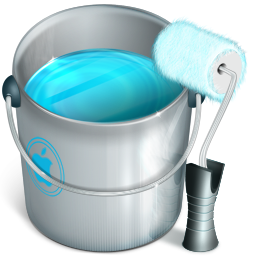With most blogging platforms being geared for beginners, blog design can be as simple as choosing from a selection of pre-made templates and uploading a logo for some users. This might work for you, but if you want to take your efforts to the next level, then be prepared to take it up a notch.
Following are six high-level blog design tips that will help you see noticeably better results.

1. Design with Purpose
If your blog is to make a lasting impact, then you must think beyond looking good with your design. You need to work with a specific purpose in mind.
– What is the focus of your blog? Whatever it is, make sure your design is aligned with the topic as much as possible.
– What makes your blog special? The unique value proposition of your blog should stand out on first glance. A combination of powerful copy and a solid design will make sure it does.
– Who is your audience? Finally, always remember that the look and feel of your blog should accommodate the people who read it. If they don’t find it effective, then something is definitely wrong.
2. Small Details Matter
When it comes to blogging, those small, seemingly insignificant nuances can turn out to be huge deals that put a damper on your efforts. Details you want to pay attention include:
– Tags. Please don’t underestimate the power of tags. They offer tremendous SEO value and could be the difference between a blog post that enjoys a high visibility in the search engines, and one that is buried deep within its own domain.
– Search function. Most blogging platforms support internal search functionality, yet very few bloggers take advantage of this luxury. Some visitors could come in looking for something in particular, and by providing this feature, you can make sure they have an easy time finding it.
– Author attribution. Who wrote your blog post? It wasn’t really a nameless team member known around the office as “Admin”, was it? Simply giving proper attribution to posts can go a long way in creating bonds between your authors and your readers.
3. Optimize Your Images
By now, most bloggers know all about how images can dramatically enhance the visual appeal and value of your blog posts. However, few are actually using images to their full potential. When you upload photos, you can take the time to optimize them by entering keywords in the description and available text fields, or just insert them into your posts. I vote for optimization because it makes your images search-friendly. You can make them more powerful altogether by adding compelling captions that draw attention to your content.
4. Adopt the Grid Approach
The grid system has been used in print media for years. It is currently one of the hottest trends in web design. The system uses a combination of rows and columns to create unique layouts that accommodate content-rich sites. A grid can provide a solid foundation that makes your blog much more flexible and easier to build on in the future. And due to the organizational component, a grid system can also greatly improve the navigation experience for visitors.
5. Be Careful with Fonts
Fonts are normally an afterthought, but they can be very helpful if you know how to use them. While there are tons of options out there, it is generally best to keep it simple with fonts. What you think is creative could be turning people off or causing an unwanted distraction. Think basic fonts like Arial, Georgia, Times New Roman, and Verdana. Stay simple in terms of font style, keep the number you use to a minimum, and you’ll be in good shape.
6. Learn to Love White Space
One of the biggest mistakes bloggers make is attempting to cover almost every inch of their template with content. They have widgets on one side, a huge blog roll on the other, and an extensive tag cloud at the bottom of their post. There is nothing wrong with utilizing your available space, but white space can be an attribute. Use it right, and it will highlight your calls to action and other aspects you want people to notice.
Content is indeed king, but since your blog design supports it, it is equally important to your success. Design is so vital, that it pays to revisit it every once and a while to determine if tweaks need to be made. No matter the situation, with everything in place, these tips are sure to help you see significant improvements.









